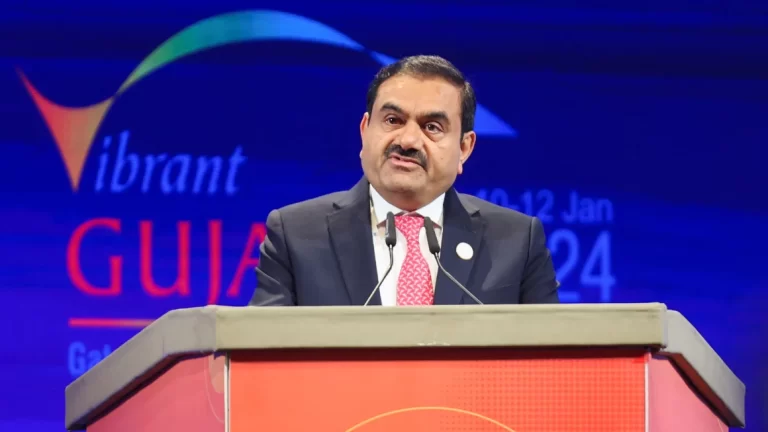One year ago, a spectacular David and Goliath battle shook corporate India when a tiny American firm took on one of the world’s richest infrastructure tycoons.
Hindenburg Research published a blistering report in January 2023, accusing Gautam Adani, then Asia’s richest man, of engaging in fraud over decades. Hindenburg said it had taken a short position in his companies, meaning it would benefit if their shares fell.
The Indian ports-to-power conglomerate denounced the short-seller’s report as “baseless” and “malicious.” But that failed to halt a stunning stock market meltdown that, at one point, wiped more than $100 billion off the value of its listed companies. Adani’s personal fortune was also hammered, collapsing by more than $80 billion in the month following the release of the report.
A year on, Adani appears to have bounced back. Analysts are even saying the billionaire can give himself a pat on the back for the way he handled the crisis.
“The group has done exceptionally well on various fronts since the Hindenburg report,” said Manish Chowdhury, head of research at brokerage StoxBox. “It is now better managed and they have learnt quickly from their mistakes and handled the media glare well.”
Shares in most of Adani’s 10 listed firms have rallied this year, with some touching record highs recently. On Thursday, his wealth once again crossed the $100 billion threshold, according to the Bloomberg Billionaires Index.
An ‘attack’ on India
Hindenburg Research, named after the 1937 airship disaster, had accused the Adani Group of “brazen stock manipulation” and it questioned the “sky-high” valuations of Adani firms. Their “substantial debt” put the group “on a precarious financial footing.”
Adani Group responded with an angry rebuttal running to more than 400 pages, calling the analysis “nothing but a lie” and charging that the American firm’s shorting of overseas-traded bonds and derivatives amounted to securities fraud. It also condemned the report as an “attack” on India.
But it wasn’t the first time analysts had questioned the group’s aggressive debt-fuelled expansion spree into sectors ranging from airports to media.
However, since the Hindenburg report, the group has worked on reducing its borrowing. Its net debt declined by 3.5% to $21.73 billion in the six months through September, according to a presentation it made to investors last year.
It also attracted nearly $5 billion from new foreign investors, including US private equity firm GQG Partners.
“In the fog of this war, our biggest weapon was adequate liquidity,” Adani wrote in an opinion in the Times of India newspaper on January 25, exactly a year after the Hindenburg report was published.
“To augment our strong cash reserves … we further fortified our financial position by raising an additional [400 billion rupees or $4.8 billion] equal to the debt repayment for the next two years, through stake sales in our group companies to investors of immaculate global standing, like GQG Partners and the QIA,” he added.
It also prepaid over $2 billion of margin-linked financing, a type of loan where promoters use their existing shares as security, which has “insulated and ring-fenced our portfolio from market volatility,” the 61-year-old industrialist wrote.
Back in the $100 billion club
The conglomerate got another boost last month when India’s top court ordered the market regulator to wrap up its investigation into the group quickly, saying no further probes were needed.
And while, at $100 billion, Adani’s personal fortune is still about $50 billion less than it was at its peak in 2022 — when he briefly ousted Jeff Bezos as the world’s second richest person — it places him as the 12th richest man in the world, just behind fellow countryman Mukesh Ambani.
A college dropout, Adani has at times been compared to business magnates such as John D Rockefeller and Cornelius Vanderbilt, who built vast monopoly businesses in the 1800s during America’s Gilded Age.
He began his career with diamond trading before setting up a commodity trading business in 1988, which later evolved into Adani Enterprises, the group’s flagship unit. He now has firms in sectors ranging from coal to clean energy.
Concerns still remain. Critics say Adani’s comeback rests heavily on crony capitalism, as he is seen as a close ally of Indian Prime Minister Narendra Modi. But, for now, markets are betting on Adani’s ability to grow his business in sectors that India’s ruling Bharatiya Janata Party has prioritized for development.
“The group is poised to do well in sectors that are important for India’s economic future,” said Chowdhury. “Most of the issues raised by Hindenburg are on the back burner now.”
— CutC by bbc.com


